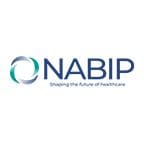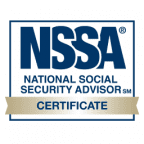Medicare Savings Programs (MSPs) are a crucial resource for low-income Medicare beneficiaries. These programs can help individuals cover out-of-pocket healthcare expenses that are not covered by traditional Medicare coverage, such as deductibles, co-payments, and premiums. In this comprehensive guide, we’ll take a closer look at MSPs, how they work, and how to determine if you’re eligible.
Medicare Savings Programs
Medicare Savings Programs (MSPs) are state-run programs that help low-income Medicare beneficiaries with their healthcare costs. MSPs are not a separate type of insurance; rather, they help pay for out-of-pocket expenses associated with Original Medicare coverage. The program is designed to help individuals with limited income and resources who may not be able to afford their healthcare costs.
How Does Medicare Savings Program Work?
The program works by providing financial assistance to individuals who are struggling to pay for out-of-pocket expenses associated with Original Medicare coverage, such as premiums, deductibles, co-payments, and coinsurance.
There are four types of MSPs available to eligible beneficiaries: Qualified Medicare Beneficiary (QMB) Program, Specified Low-Income Medicare Beneficiary (SLMB) Program, Qualifying Individual (QI) Program, and Qualified Disabled and Working Individuals (QDWI) Program. Each program has its own eligibility requirements and covers different aspects of Medicare costs.
Once an individual is determined to be eligible for an MSP, the program will help pay for some or all of their out-of-pocket healthcare expenses. For example, the QMB program covers the cost of Medicare Part A and Part B premiums, deductibles, co-payments, and coinsurance. The SLMB and QI programs, on the other hand, only cover the cost of Medicare Part B premiums. The QDWI program covers the cost of Medicare Part A premiums for disabled individuals who are working and have limited income.
To apply for MSPs, individuals must contact their state Medicaid agency and fill out an application. They must also provide proof of income and assets to determine eligibility. Once approved, individuals will receive a letter from their state Medicaid agency letting them know which MSP they qualify for and what benefits they’ll receive.
It’s important to note that the income and asset limits for MSPs change each year, so it’s crucial to check with your state’s Medicaid agency for up-to-date information. Additionally, it’s important to understand that MSPs are not a separate type of insurance but rather a financial assistance program that works alongside traditional Medicare coverage.
Types of Medicare Savings Programs
There are four types of MSPs: the Qualified Medicare Beneficiary (QMB) Program, the Specified Low-Income Medicare Beneficiary (SLMB) Program, the Qualifying Individual (QI) Program, and the Qualified Disabled and Working Individuals (QDWI) Program. Each program has its own eligibility requirements and covers different aspects of Medicare costs. Understanding the different types of MSPs and their eligibility requirements can help individuals determine which program may be best suited to their needs.
Qualified Medicare Beneficiary (QMB) Program
The QMB program is available to individuals who are eligible for Medicare Part A and have limited income and assets. To be eligible for the program, individuals must have an income at or below 100% of the federal poverty level (FPL), which varies depending on the individual’s state of residence. They must also have assets that fall below a certain limit, which also varies by state.
Once approved for QMB, individuals will receive a special Medicare card that indicates their status as a QMB. This card is used to access healthcare services without incurring any out-of-pocket costs, as the program pays for all Medicare Part A and Part B cost-sharing expenses. This means that QMB beneficiaries will not be charged for deductibles, co-payments, or coinsurance, even for services not covered by Medicare.
Additionally, eligible beneficiaries may receive Extra Help paying for prescription drugs, which limits their out-of-pocket costs to $4.30 per covered drug in 2023.
Specified Low-Income Medicare Beneficiary (SLMB) Program
The Specified Low-Income Medicare Beneficiary (SLMB) Program is another type of Medicare Savings Program (MSP) available to eligible individuals. The SLMB program provides assistance with paying Medicare Part B premiums, which can be a significant financial burden for those with limited income and resources. To be eligible for the SLMB program, individuals must have an income between 100% and 120% of the federal poverty level (FPL), which varies by state. They must also meet asset requirements that vary by state. If approved, the SLMB program will pay for Medicare Part B premiums on behalf of the beneficiary (You must qualify for Part A and B). It’s important to note that the SLMB program does not cover other Medicare cost-sharing expenses, such as deductibles, co-payments, and coinsurance. However, individuals enrolled in the SLMB program may be eligible for other benefits, such as Medicaid or the Medicare Savings Program’s Qualified Medicare Beneficiary (QMB) program. You can also get Extra Help, you’ll receive assistance in covering the cost of your prescription drugs. Under this program, your out-of-pocket expenses for each drug covered by your Medicare drug plan will not exceed $10.35 in 2023. This means that you’ll have lower prescription drug expenses, which can help make your healthcare more affordable.
Qualifying Individual (QI) Program
The Qualifying Individual (QI) Program also helps cover the costs of Medicare Part B premiums only. This program is available to individuals with slightly higher income levels than the SLMB program.
Also, to continue receiving benefits from the QI Program, you’ll need to reapply every year. Applications are approved by state agencies on a first-come, first-served basis, with priority given to those who received QI benefits in the previous year. Additionally, if you’re eligible for Extra Help, you’ll receive assistance paying for your prescription drugs. The cost of each drug covered by your Medicare drug plan won’t exceed $10.35 in 2023. Keep in mind that if you qualify for Medicaid, you won’t be eligible for the QI Program, but you may qualify for assistance from another Medicare Savings Program.
Qualified Disabled and Working Individuals (QDWI) Program
The Qualified Disabled and Working Individuals (QDWI) Program is designed to help disabled individuals who are working and have limited income pay for their Medicare Part A premiums.
This program is available to individuals who have a disability and are working but lost their Social Security disability benefits and premium-free Medicare Part A due to their employment status. If you meet these qualifications, you may be eligible for the QDWI Program.
Who is Eligible for Medicare Savings Programs?
To be eligible for MSPs, individuals must be enrolled in Medicare Part A (for some programs Part B also) and have limited income and resources. Eligibility requirements vary by program type, but generally, individuals must have income at or below 135% of the federal poverty level (FPL) and meet asset limits set by their state. In addition, some MSPs have additional eligibility requirements, such as being eligible for Medicaid or being a Qualified Medicare Beneficiary (QMB).
For the year 2023, the Qualified Medicare Beneficiary (QMB) program has set monthly income and resource limits based on the applicant’s situation, which are $1,235 and $9,090 for individuals and $1,663 and $13,630 for married couples.
The Specified Low-Income Medicare Beneficiary (SLMB) Program provides assistance for Part B premiums, but it requires that the applicant have both Part A and Part B coverage to qualify. In 2023, the program has set monthly income and resource limits based on the applicant’s situation, which are $1,478 and $9,090 for individuals and $1,992 and $13,630 for married couples.
The Qualifying Individual (QI) Program provides financial assistance for Part B premiums to those who meet the eligibility criteria of having both Part A and Part B coverage. To qualify for the program in 2023, the monthly income limit for individuals must not exceed $1,660 and the resource limit must be $9,090, while for married couples the monthly income limit is $2,239 with a resource limit of $13,630.
If you have a disability, are working, and lost your Social Security disability benefits and Medicare premium-free Part A because you returned to work, you may be eligible for the Qualified Disabled Working Individual (QDWI) Program which can assist with Part A premiums only, subject to monthly income and resource limits for 2023 of $4,945 and $4,000 respectively for individuals, and $6,659 and $6,000 respectively for married couples.
How to Apply For Medicare Savings Program?
To apply for Medicare Savings Programs, you can contact your state Medicaid agency. You can find the contact information for your state agency on the Medicare website or by calling the Medicare hotline. When you contact your state Medicaid agency, they will provide you with an application form and instructions on how to apply. You will need to fill out the application form and provide documentation of your income and resources. Once your application is approved, you will receive information about the program and any benefits you may be eligible for. It’s important to apply as soon as possible to ensure that you receive any benefits you are entitled to.








